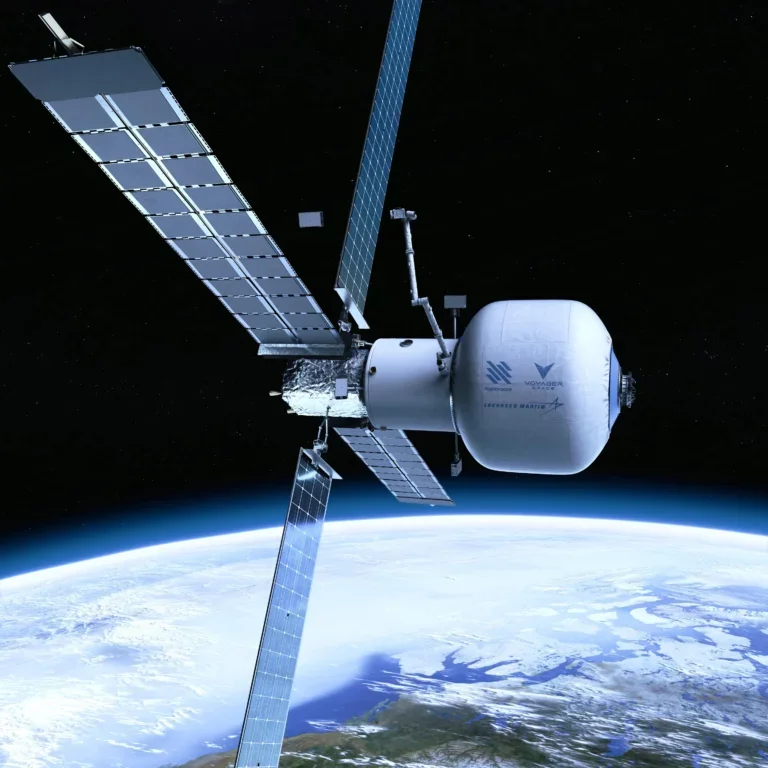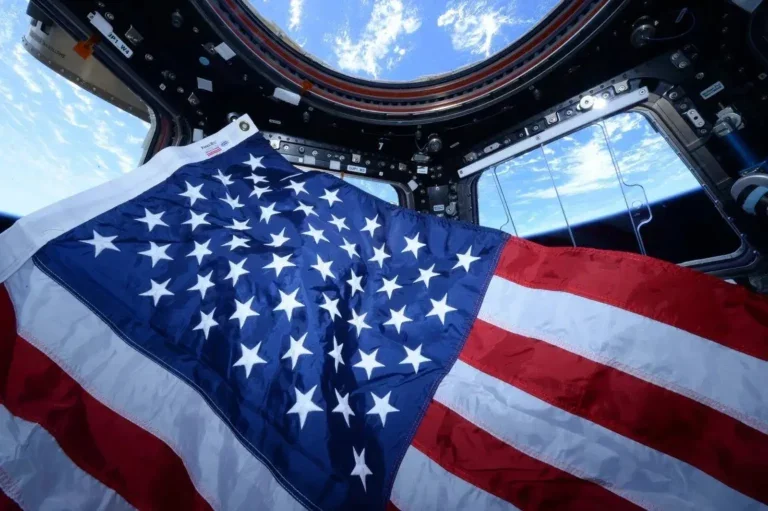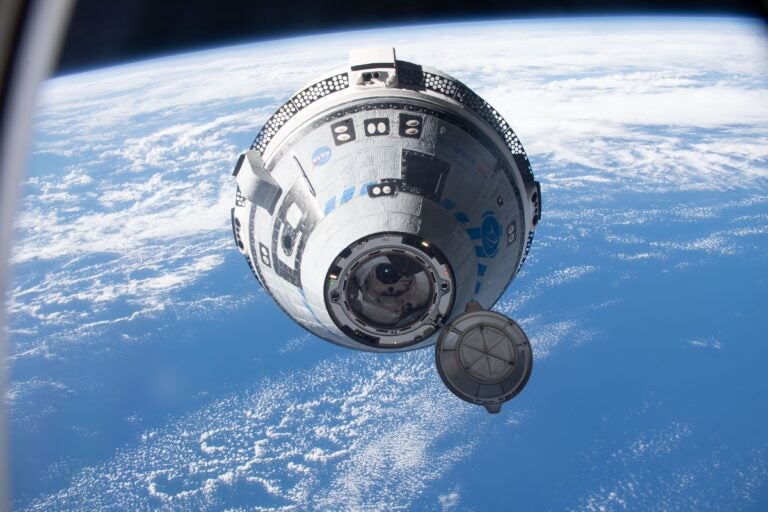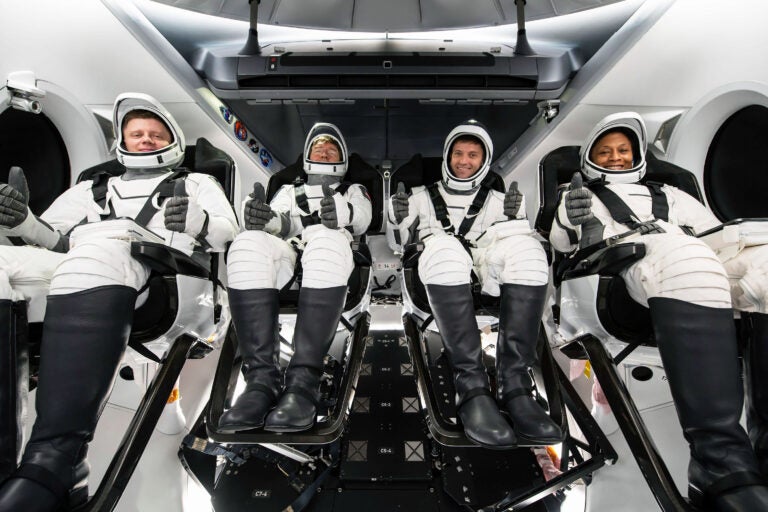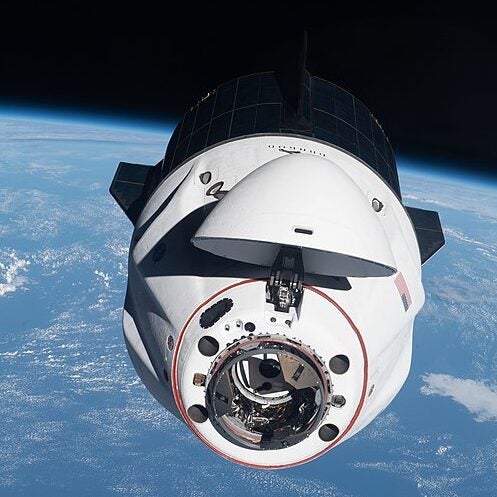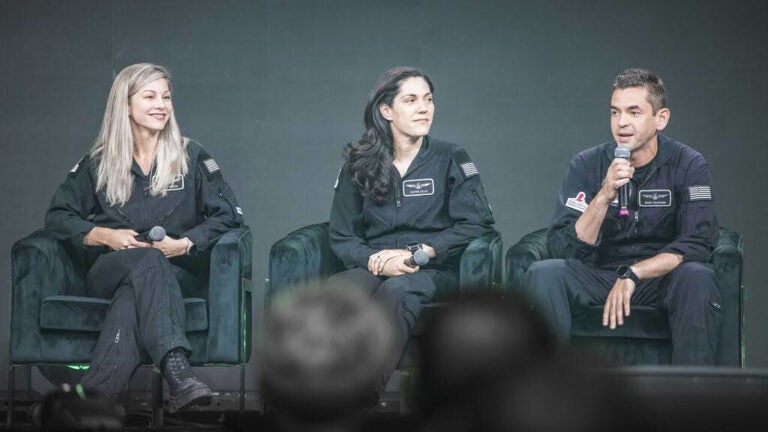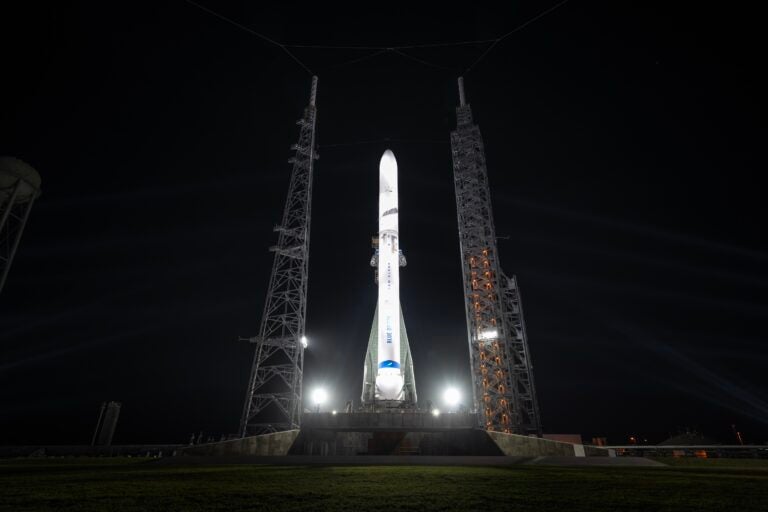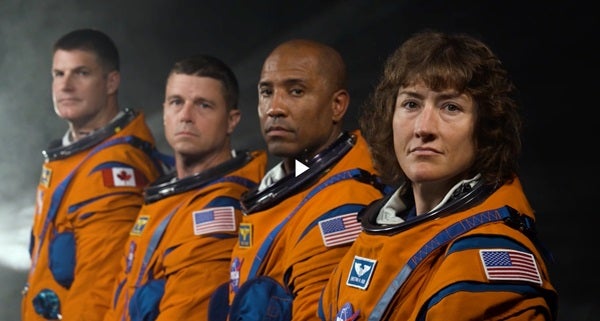
NASA has selected the four astronauts that will travel to the Moon during the upcoming Artemis 2 mission, which will be humanity’s first crewed return to the Moon in more than 50 years.
The four astronauts are: Reid Wiseman, Victor Glover, and Christina Koch of NASA, and Jeremy Hansen of the Canadian Space Agency.
“The Artemis 2 crew represents thousands of people working tirelessly to bring us to the stars,” said NASA Administrator Bill Nelson before announcing the crew during a live event broadcast on NASA TV. “This is their crew. This is our crew. This is humanity’s crew.”
Get to know the Artemis 2 crew
Reid Wiseman (Commander):
Formerly NASA’s chief astronaut, Wiseman is a 47-year-old captain in the U.S. Navy that was selected to be an astronaut in 2009. In 2014, he spent 165 days aboard the International Space Station. During this time, Wiseman undertook two spacewalks and helped carry out more than 300 scientific experiments in areas ranging from human physiology to medicine to Earth science to astrophysics. During that stretch, Wiseman and his team also set a record by completing 82 hours of research in a single week.
Victor Glover (Pilot):
A 46-year-old captain in the U.S. Navy, Glover was selected to be an astronaut in 2013. In November 2020, he served as pilot of the first operational mission of the SpaceX Crew Dragon capsule, spending 168 days on the International Space Station. Glover was also the first black man to be assigned to a space station crew and has carried out four total spacewalks. Some colleagues call Glover “Ike,” a nickname that one of his first commanding officers jokingly gave him. It stands for “I know everything.”
Christina Koch (Mission Specialist):
Previously an electrical engineer at NASA’s Goddard Space Flight Center in Maryland, Koch was selected to be an astronaut in 2013. At 44 years old, Koch has carried out six spacewalks totaling more than 42 hours. She also currently holds the record for the longest single spaceflight by a woman, which she set while staying aboard the International Space Station for a whopping 328 days straight.
Jeremy Hansen (Mission Specialist):
One of four active Canadian astronauts, Hansen is a 47-year-old former fighter pilot. He was selected to be an astronaut by the Canadian Space Agency (CSA) in 2009, but he has yet to fly to space. During his time representing the CSA at NASA, Hansen has served as a capsule communicator, relaying information between mission control in Houston and astronauts aboard the International Space Station.
The Artemis 2 crew was selected by NASA’s Director of Flight Operations, Norm Night, and NASA’s Chief Astronaut, Joe Acabá, under the supervision of Johnson Space Center Director Vanessa Wyche.
Humanity returns to the Moon
The Artemis 2 mission, slated for launch in 2024, will not see humans return to the Moon’s surface. Instead, the crew will take a trip around the Moon, testing the technologies required to eventually land humans on the lunar surface during Artemis 3.
“Artemis 1 was a resounding success,” said Night. “And Artemis 2 will leverage that by putting humans in the loop, executing operations in the critical path leading to new footprints on the lunar surface.”
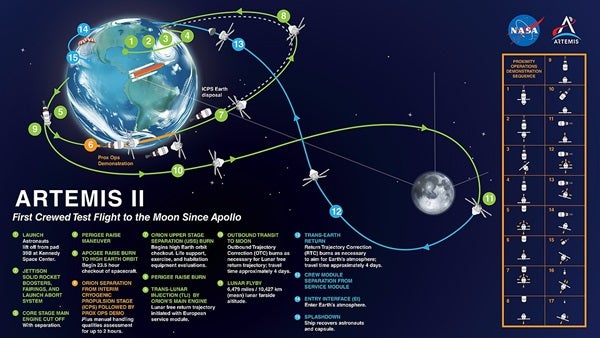
“[Artemis 2] is a mission that is significant in many ways,” said Nelson. “It’s a demonstration of our ability to push the boundaries of human achievement. It’s a testament to the unwavering passion of the team that will make it possible. And it’s a message to the world: We choose to go back to the Moon and then onto Mars, and we’re going to do it together, because in the 21st century, NASA explores the cosmos with international partners.”
In total, the Artemis 2 mission to the Moon and back will take about 10 days to complete. And once the crew-carrying Orion spacecraft makes its way back, it will reenter Earth’s atmosphere at a blistering 30 times the speed of sound before splashing down in the Pacific Ocean.
“The Moon is a symbol of our can-do spirit,” said Nelson. “And over the course of the Artemis missions, the first woman and the first person of color will take giant leaps on the lunar surface. It’s been more than a half-century since astronauts journeyed to the Moon. Well folks, that’s about to change.”
Along with members of the press and many elected officials, including Texas Senator Ted Cruz, several surviving Apollo astronauts were also present at the event.
“We’ve made many giant leaps in the past 60 years, fulfilling President Kennedy’s goal of landing a person on the Moon,” said Wyche. “And today, we stand on the shoulders of giants as we reach further into the stars and push forward to the Moon once again — and on to Mars.”
“We will show what is possible when we dare to reach,” said Nelson.

